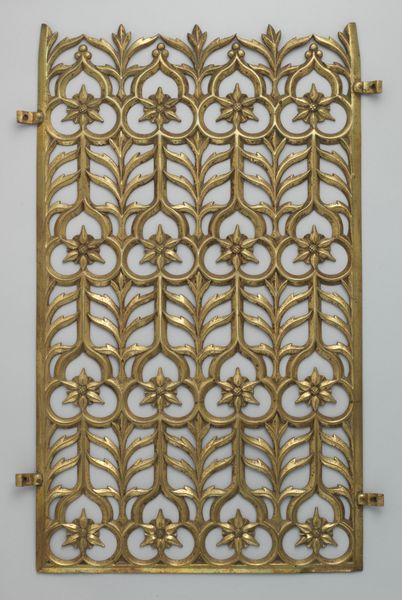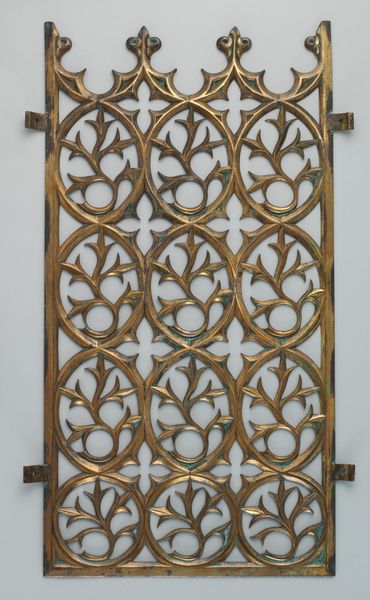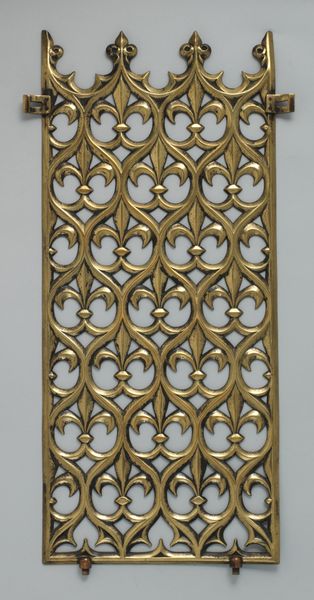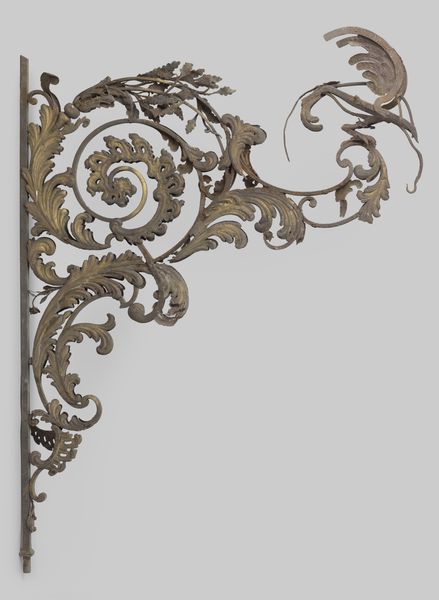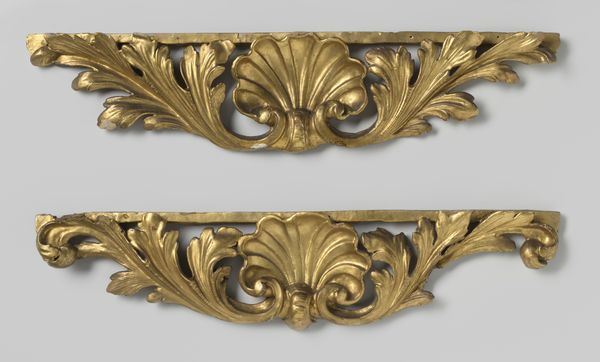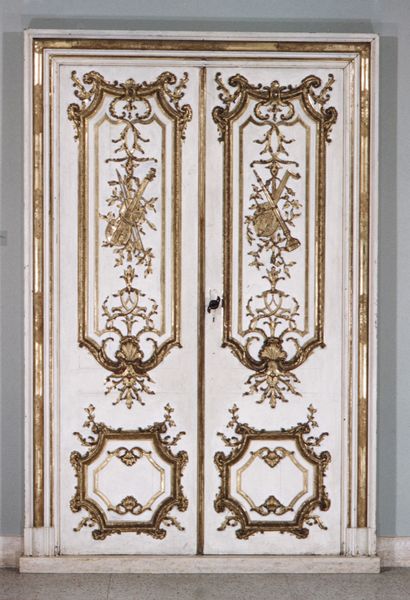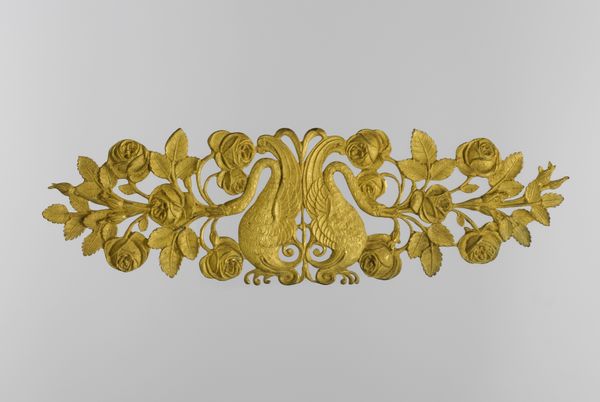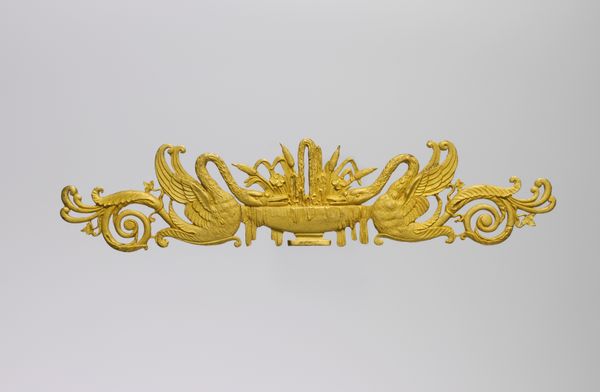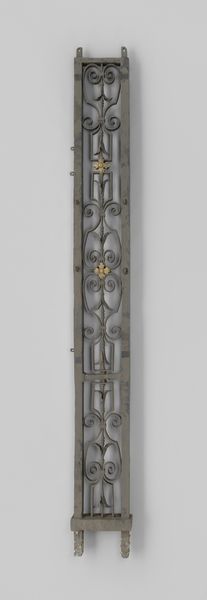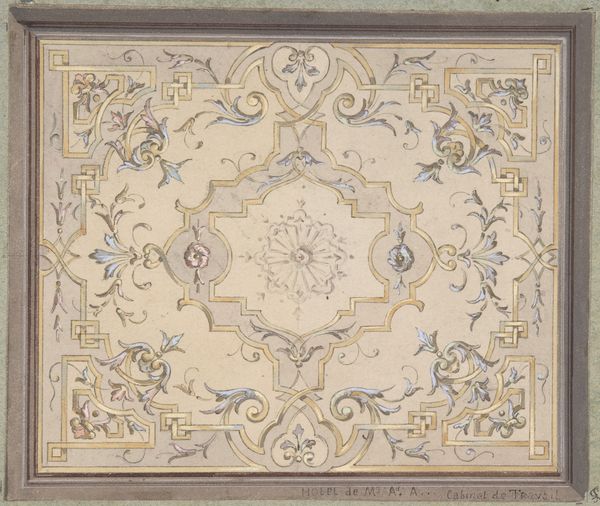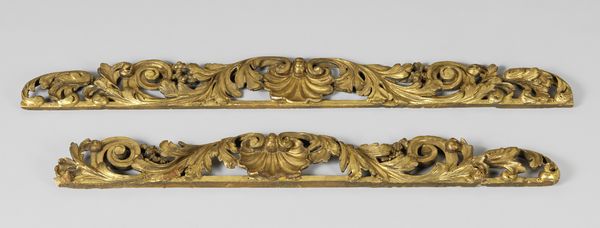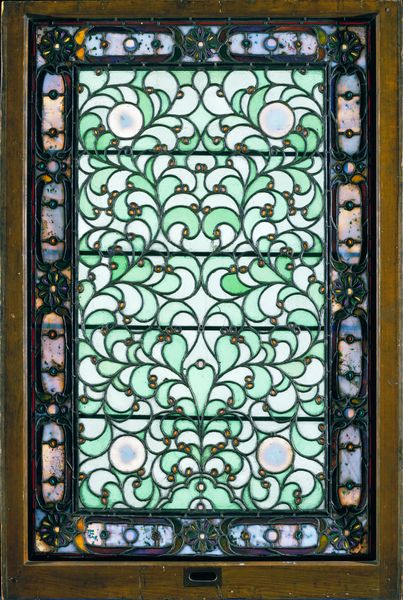
Decorative grill from the Palace of Westminster 1840s - 1850s
0:00
0:00
Dimensions: Overall (confirmed): 20 3/4 × 13 3/4 × 1/4 in. (52.7 × 34.9 × 0.6 cm)
Copyright: Public Domain
Editor: Here we have a decorative grill, probably from the 1840s or 50s. It was crafted by Augustus Welby Northmore Pugin for the Palace of Westminster, and it's made of metal. I find the intricate fleur-de-lis pattern so striking. What stands out to you when you look at this piece? Curator: I see more than just a pretty pattern. Consider the labour and materials involved in creating this. This wasn’t some mass-produced item. Each piece of metal had to be shaped, molded, and fitted by skilled hands. What does that tell us about the social value placed on craftsmanship during the Gothic Revival? Editor: It suggests a respect for skilled labor, contrasting perhaps with the rise of industrial production? Curator: Precisely! Pugin was deeply critical of industrialisation. The Gothic Revival, in his eyes, was a moral and social project. The revival of these crafts challenged the perceived soullessness of the machine. The decorative grill becomes a material statement against a changing social order. How does viewing it in that light alter your understanding of it? Editor: It shifts my perspective from simply aesthetic appreciation to thinking about the social and economic context of its creation. It's a tangible protest against industrialization. Curator: Indeed. Think about the material cost, the transport of that metal, the energy expended in its creation. All that feeds into our understanding of the cultural priorities in commissioning and installing a grill like this one in the Palace of Westminster. What implications does that have on how we view Parliament’s architectural messaging during this period? Editor: I'm beginning to understand the Palace not only as a symbol of power, but also as a stage where different social values, old craftsmanship versus new production means, played out. It's about more than just decoration; it is about a world view expressed materially. Curator: Exactly. It reveals the intricate relationship between artistic production, material consumption, and social ideology in Victorian England. We begin to examine objects as material instantiations of power dynamics and changing economies, challenging this object's role as mere "decoration". Editor: I’ll definitely look at decorative arts with a fresh perspective now! Curator: And hopefully consider not only the “what” but the “how” and “why” embedded in every groove.
Comments
No comments
Be the first to comment and join the conversation on the ultimate creative platform.
